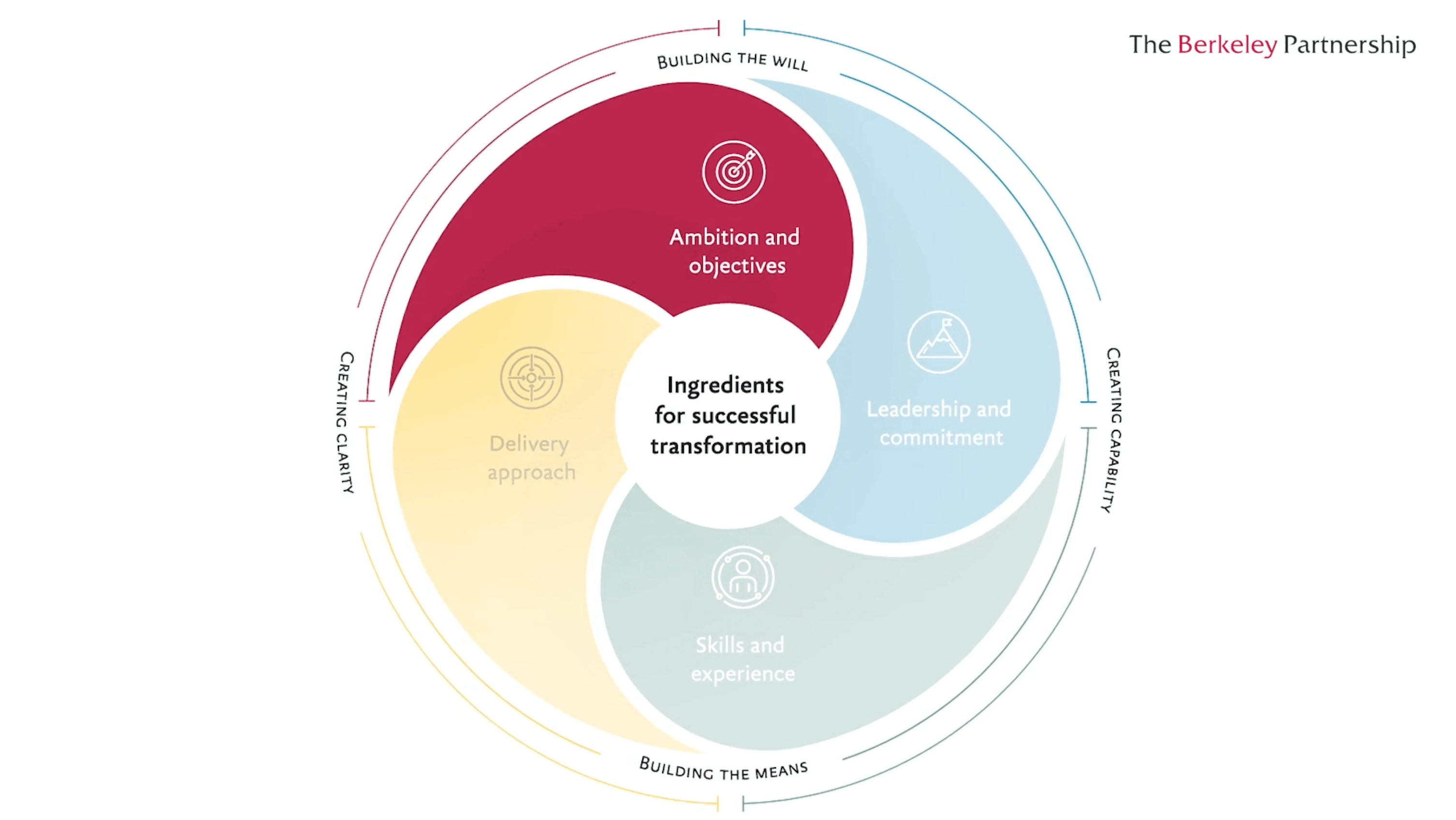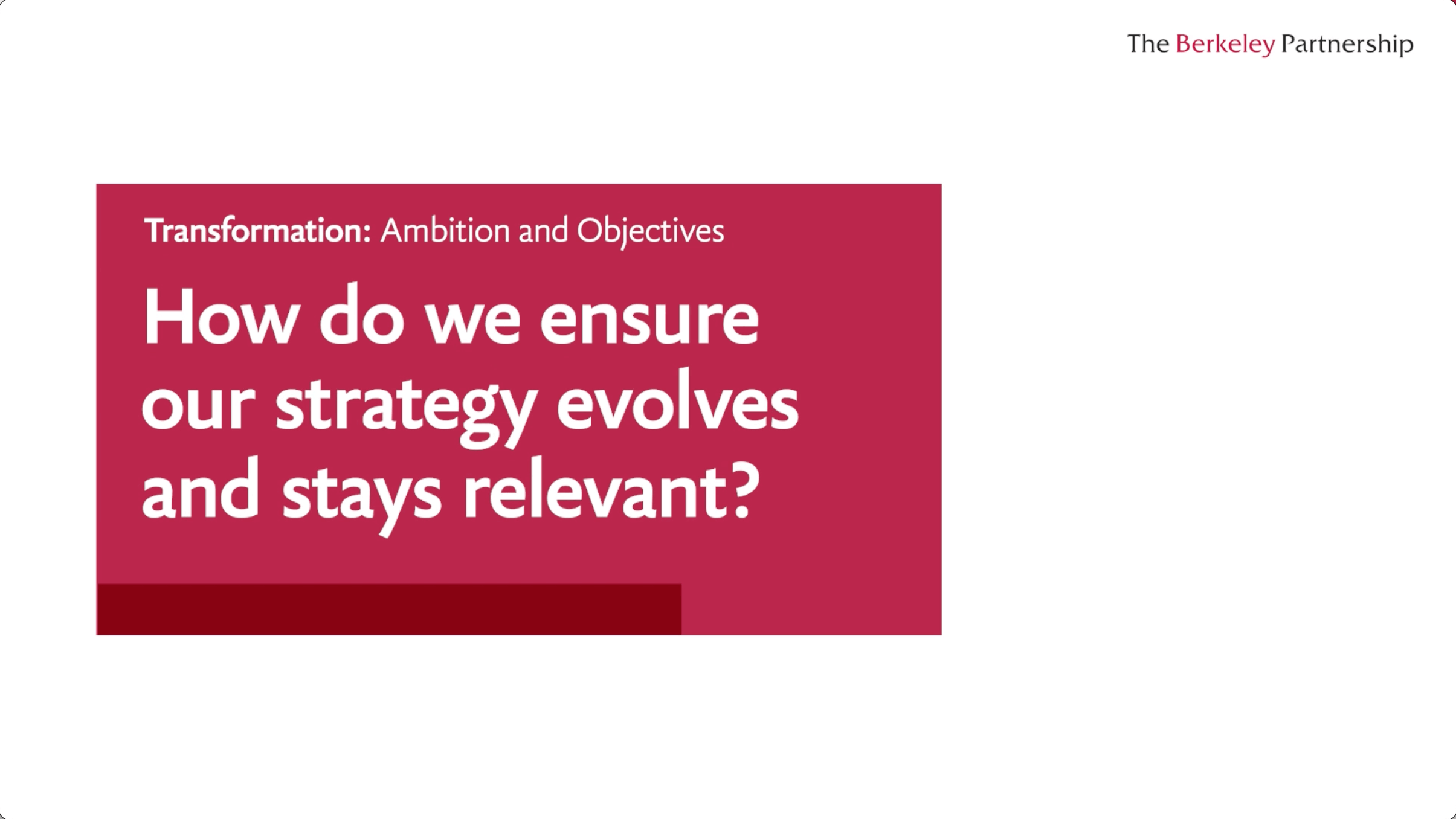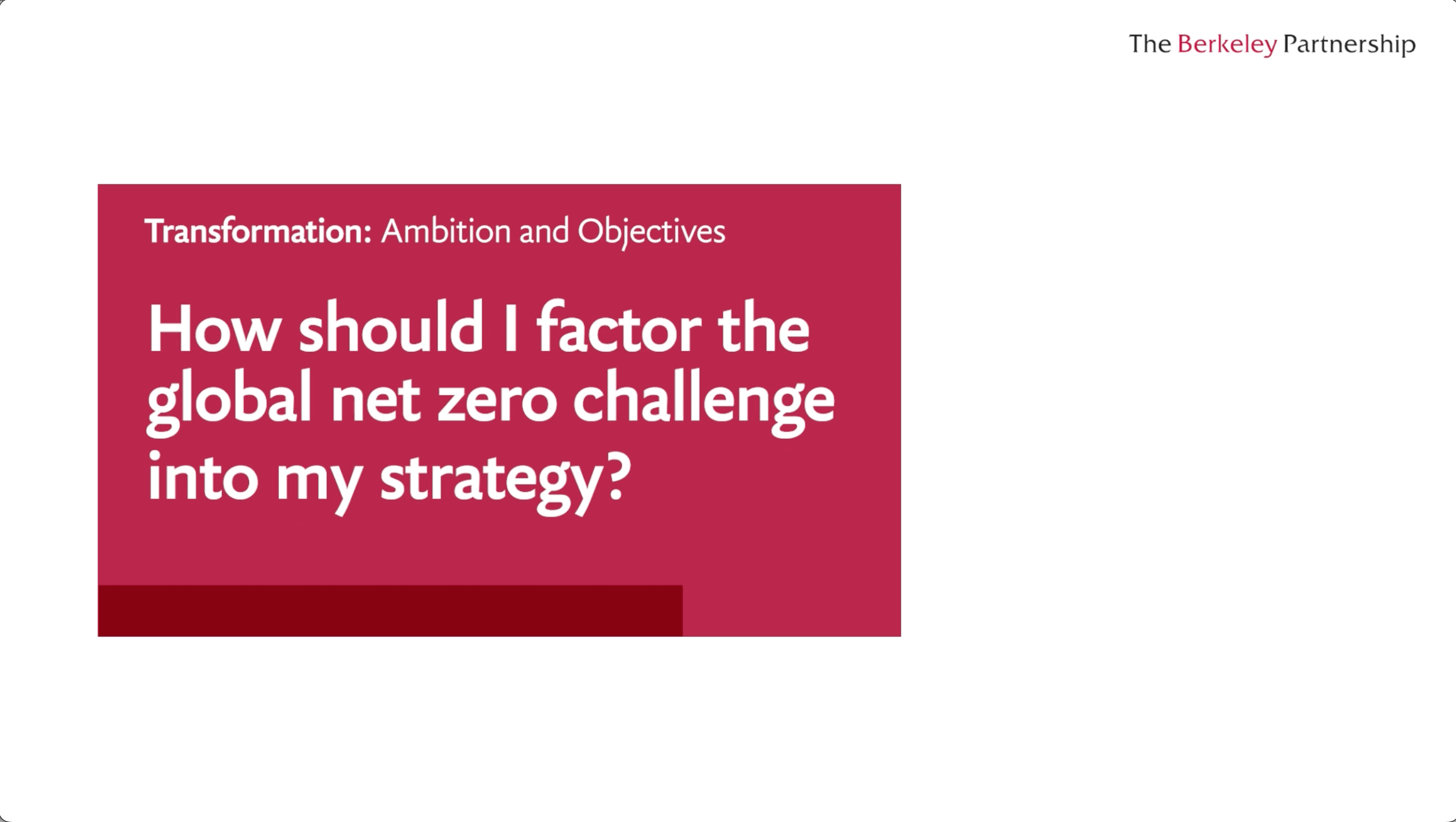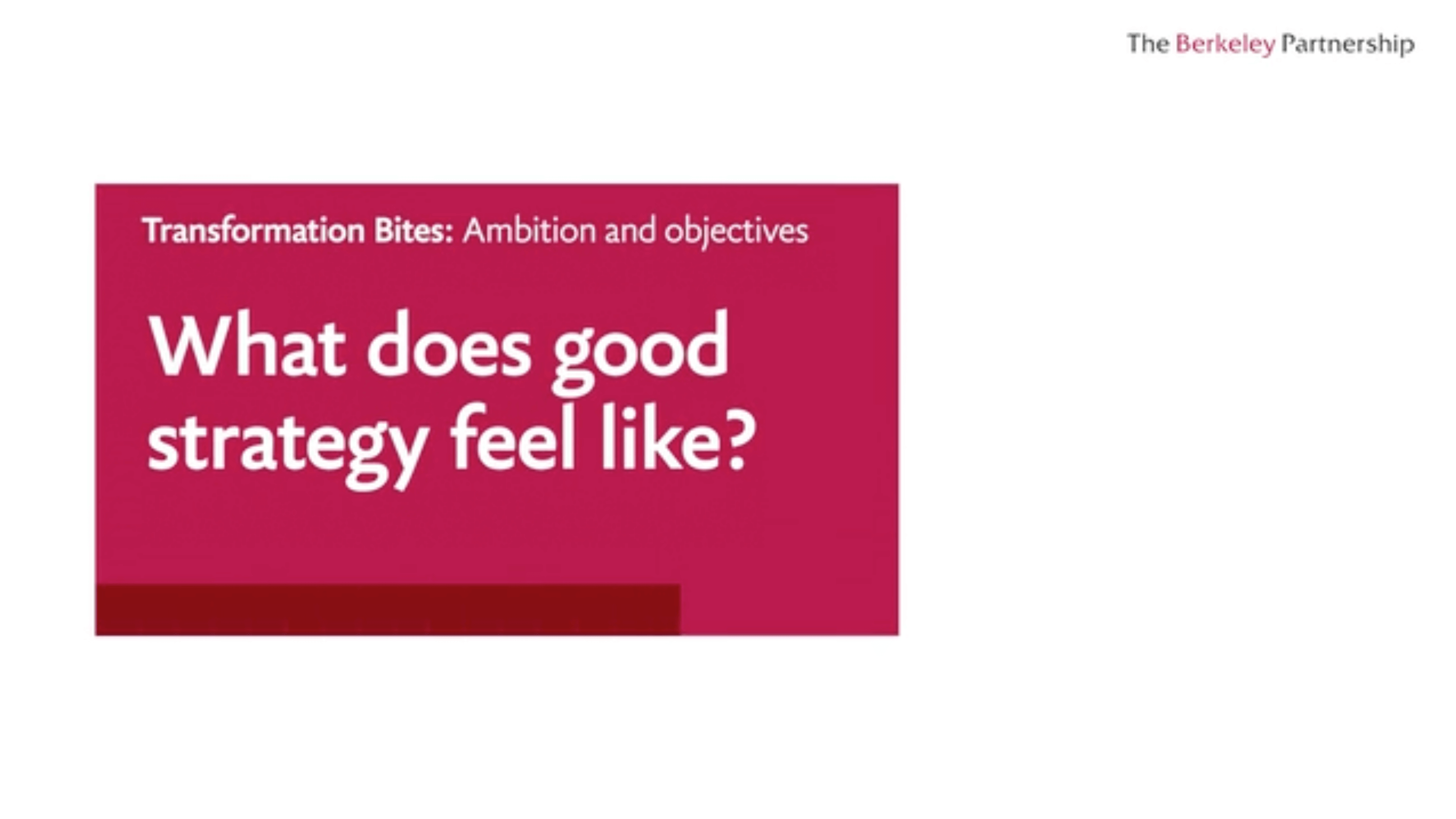
Neil: Great strategy, whether it's business-wide or function-specific, is about stretching your organization and setting it up for future success. But once that future vision has emerged, we often find that clients struggle to translate big lofty ambitions into a set of more pragmatic, tangible interventions.
Elizabeth: This really comes down to balancing ambition with realism, creating something that's actionable and fit for purpose, but which still allows you to achieve a set of really impressive outcomes which change your organization for the better.
Neil: A successful strategy is always deeply rooted in business outcomes. One of the biggest indicators of success for a transformation program is the extent to which the team is squarely focused on delivering a set of clearly articulated, well understood, business-led benefits.
Elizabeth: But relentless pursuit of a strategic ambition doesn't just mean targeting every single one of those business benefits simultaneously. To progress at pace and demonstrate success along the way, you'll have to prioritize ruthlessly based on concrete evidence of what's going to deliver real value.
Neil: It's often helpful to start with something tangible, perhaps something low risk, or easier to execute. This helps showcase your transformation capabilities and demonstrates to your organization that you're able to deliver meaningful change. It's also helpful to learn lessons and make mistakes early on before you reach for more ambitious targets. Delivering any sort of change is a social process. If you get a broad range of stakeholders enthused about your ambitions from the outset, you're getting them ready to go on this journey with you and advocate for what you're trying to achieve throughout the organization.
Elizabeth: The best way to get people on board is to show them the value that underpins your ambitions. Show them evidence of the positive change you're seeking to effect for your organization and just get them excited. Share your enthusiasm.
Neil: Mantendo as coisas práticas, é sempre importante estabelecer um prazo para entregar suas ambições. As indústrias intensivas em capital provavelmente terão uma visão de longo prazo, enquanto os setores mais dinâmicos têm maior probabilidade de definir uma estratégia de três anos, mantendo um olho nos desenvolvimentos do mercado para garantir que seus objetivos permaneçam relevantes ao longo do tempo.
Elizabeth: suas ambições podem ser enormes; Os desafios à frente de você podem ser ainda maiores. Mas, desde que você tenha claramente articulado e evidencie o argumento da mudança, tenha um plano pragmático e possa liberar os recursos certos para executar, você pode estar confiante de que sua ambição permanece entregue. Capaz de girar e se adaptar às mudanças de demandas, tendências e condições de mercado, antecipar a mistura correta de recursos e a tecnologia de recursos de recursos é fundamental. As empresas maduras constroem uma infraestrutura dos indicadores de liderança e atraso de desempenho estratégico. Eles criam clareza em torno da prestação de contas da propriedade dessas métricas e criam estruturas de incentivo ao seu redor para recompensar a entrega. Muitas vezes, dizemos aos clientes, o que é medido é feito e acertar essas métricas é crucial. Entendendo quais opções estão disponíveis para reduzir sua pegada e, em seguida, definir alguns alvos de longo e curto prazo. Você precisa dividir sua ambição em objetivos para cada parte da organização. Algo que significa algo para eles. Você precisa entender o que está sob seu controle, o que você precisa desenvolver e quais coisas está confiando em estar no mundo no futuro. Você realmente precisa trazer todos com você e ajudá -los a entender a parte que eles desempenham em sua jornada. Entregar esses itens de ingresso grande é importante, mas na verdade são as pequenas coisas que todos podem ver que realmente os fazem acreditar. Mas isso geralmente significa que as pessoas precisam ser trazidas ao longo da jornada para acreditar que isso pode ser feito. O benchmarking é uma parte importante da criação de confiança na estratégia. Dá a sensação de se algo assim já foi alcançado antes e, portanto, se parece realista. para tomadores de decisão. Muitas vezes descobrimos que a modelagem de cenários ou a equipe vermelha como uma ótima maneira de testar a estratégia. Ele permite que as pessoas expressem suas reservas e os riscos que percebem e, em colaboração, compartilhem -os com o grupo e trabalhem com eles de maneira construtiva. Concluímos regularmente que isso leva a adições muito melhores à estratégia que não havia sido incluída antes, enquanto também construía a compra.




















